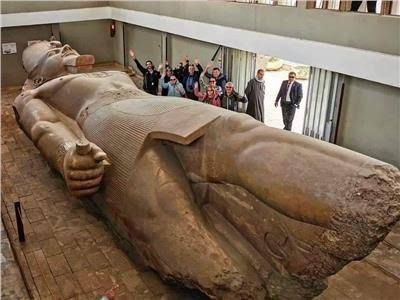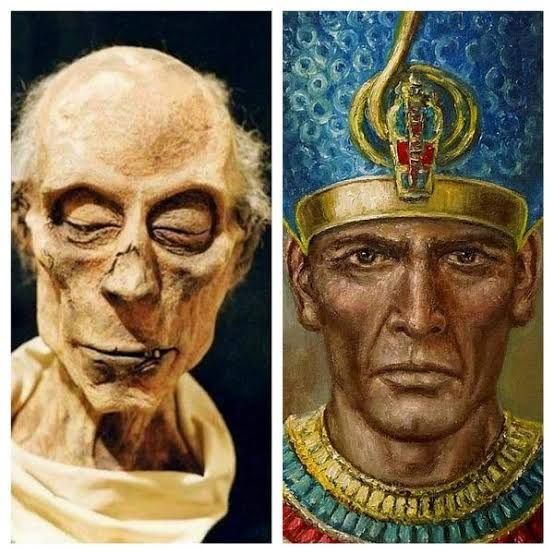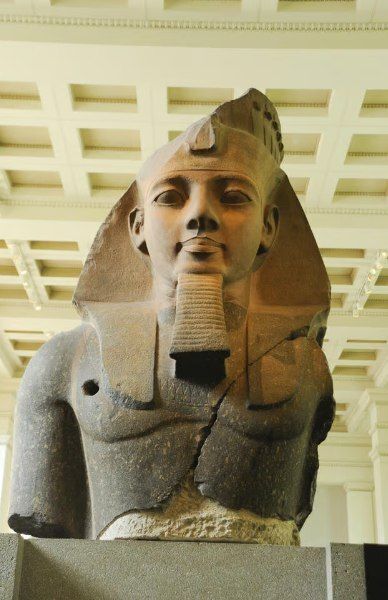Falcon powers – Israeli media outlets have repeated claims that “King Ramses II is the Pharaoh of Egypt during the period of the Exodus of the Children of Israel with the Prophet Moses.”
The Israeli newspaper Yedioth Ahronoth explained that a “complete surprise” occurred recently with the discovery of the upper part of the statue of Ramses II, nearly 100 years after the lower part was discovered.
“The upper part of a huge and ancient pharaonic statue in the likeness of Ramses II, the Pharaoh and King of Egypt from 1279 to 1213 BC, was revealed.”

The Hebrew newspaper pointed out that “in 1930, the German archaeologist Gunter Roeder discovered the lower half of a huge statue of King Ramses II, also known as the Pharaoh of Egypt and also known as Ramses the Great, who ruled Egypt for 66 years (1279-1213 BC). Israeli researchers claim that he is the Pharaoh of the Exodus.”
An Egyptian-American archaeological team, led by Dr. Yvonne Targhib Amirahayin from the University of Colorado Boulder, found the upper part of the huge statue in the ruins of the ancient city of Heliopolis, about 240 kilometers south of Cairo.

The upper half of the statue is 3.8 meters high and depicts the figure of a pharaoh with a double crown topped by the “royal cobra.” The researchers assumed that the statue “was slightly taller than 7 meters.”
Dr. Targhib Amirahayin, who worked with Dr. Bassam Jihad, an Egyptian archaeologist, in the city of Heliopolis, said, “In the excavations we conducted in Heliopolis, we did not search for this part of the statue, but we assumed that it might be there.”
In 2022, Jihad proposed that “Amirahayin conduct research on a papyrus scroll consisting of 98 lines containing ‘significant portions’ of two lost works by the Greek playwright Euripides.
After their meeting, the Egyptian archaeologist asked her to lead a field research team in Heliopolis after obtaining all the necessary approvals to start the research.”
Amirahayin said, “Heliopolis is the second most productive site for Greek papyrus, and in addition to research, our goal is to preserve the site and make it a sustainable part of the Egyptian economy.”

According to her, one of the problems in Heliopolis is “its proximity to the Nile River because after the construction of the Aswan Dam, there was no guarantee that the sandstone from which the statue of Ramses II was built would be properly preserved.” Despite the concerns, the researchers were pleased to discover that the statue was well-preserved, and they found traces of blue and yellow pigments, which can deepen the understanding of the time period and the circumstances of the statue’s creation.


